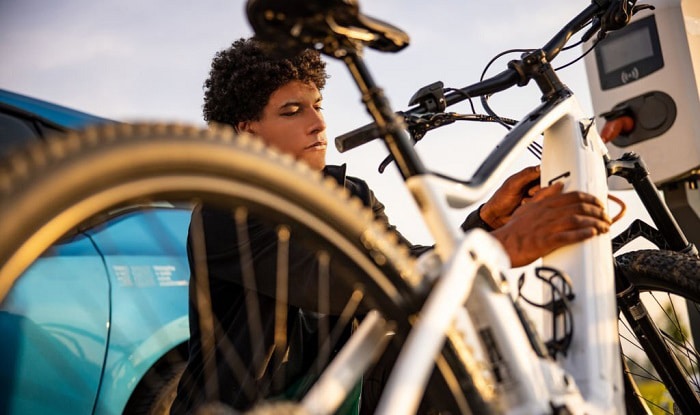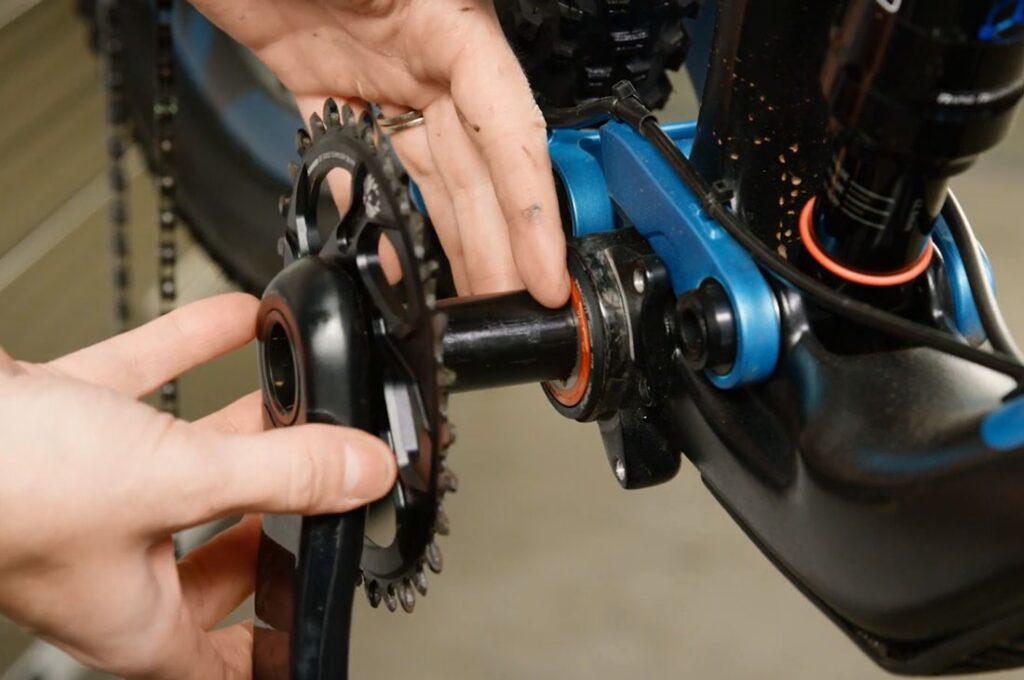E-bikes are a popular mode of transportation for many travelers, and taking your bike with you on a plane can be a great way to explore your destination. However, there are specific regulations you need to know before bringing your e-bike on a plane.
Table of contents
Understanding Airline Regulations for E-Bikes
If you’re an avid e-biker and you’re planning to travel with your e-bike, you’ll need to understand the regulations of the airline you’re flying with. While most airlines treat e-bikes as regular bikes, there are some specific rules and guidelines that you’ll need to be aware of to ensure a smooth and hassle-free journey.
General rules for transporting e-bikes on planes
Most airlines treat e-bikes as regular bikes and charge an additional fee for their transportation. However, it’s important to note that the rules may vary depending on the airline, so it’s crucial to check the airline’s website or contact their customer service beforehand.
When it comes to packing your e-bike for travel, you’ll need to disassemble it and pack it in a suitable bike bag or box. Most airlines require that you deflate the tires, remove the pedals and handlebars, and turn the handlebars sideways to make it easier to pack. You’ll also need to remove the battery and pack it separately.
It’s also important to note that some airlines may have weight restrictions for checked baggage, so you’ll need to ensure that your e-bike and bike bag or box meet these requirements to avoid any additional fees.
Airline-specific policies for e-bikes
While most airlines treat e-bikes as regular bikes, some airlines may have specific policies regarding the size and weight of e-bikes that they allow on their planes. For example, some airlines might restrict carrying bikes with a battery size exceeding a specific watt-hour (Wh) level or prohibit certain types of batteries on board.
It’s essential to check the specific policies of the airline you plan to fly with to avoid any issues or additional charges. Some airlines may require that you notify them in advance if you plan to travel with an e-bike, so it’s always best to check beforehand to avoid any surprises at the airport.
Finally, it’s worth noting that some airlines may require that you sign a waiver or release form when transporting your e-bike. This is typically to protect the airline in case of damage or loss of your bike during transit, so make sure you read and understand any waiver or release forms before signing.
In conclusion, understanding the regulations and policies of the airline you’re flying with is essential when traveling with your e-bike. By doing your research and preparing your bike for travel in advance, you can ensure a smooth and stress-free journey and enjoy exploring new cycling destinations around the world.
Preparing Your E-Bike for Air Travel
Traveling with an e-bike can be an exciting adventure, but it’s essential to make sure your bike arrives at your destination safely. Once you have verified the airline’s regulations, it’s time to prepare your e-bike for air travel. Here are some crucial steps to follow:
Disassembling your e-bike
Disassembling your e-bike can help avoid any damage during transit. Start by removing the pedals, handlebars, and any accessories like lights or mirrors. If you’re unsure how to do this, consult your bike’s manual or take it to a local bike shop for assistance. Once you’ve disassembled your bike, pack the components securely in a bike travel case for added protection.
It’s important to note that some airlines may require you to disassemble your e-bike before they allow it on the plane. Be sure to check with your airline beforehand to avoid any surprises at the airport.
Packing your e-bike securely
The most vulnerable components of your e-bike during transit are the wheels and the frame. To protect the wheels, remove them from the bike and pack them securely in a padded wheel bag. You can also use foam or bubble wrap to protect the rims from scratches or other damage.
When it comes to the frame, wrap it in bubble wrap or foam to provide extra cushioning. You can also use cardboard or other materials to create a protective barrier around the frame. Be sure to secure any loose parts, like the derailleur or brake calipers, to prevent them from moving around during transit.
Labeling and documentation requirements
It’s essential to label your bike box with your name, address, phone number, and flight information. This will help ensure that your bike arrives at the correct destination and makes it easier for airline staff to contact you if necessary.
Additionally, airlines might require you to fill out and attach specific documentation or labels to your bike box, so make sure you’re aware of these requirements. Some airlines may also require you to sign a liability waiver, acknowledging that they are not responsible for any damage that may occur during transit.
By following these steps, you can ensure that your e-bike arrives at your destination safe and sound, ready for your next adventure.
Safely Transporting E-Bike Batteries
E-bike batteries are classified as hazardous goods and are subject to strict regulations when it comes to air travel. Here’s what you need to know:
Electric bikes have become increasingly popular in recent years due to their convenience and eco-friendliness. However, when it comes to air travel, there are specific guidelines and restrictions that you must follow to transport your e-bike battery safely. These regulations are in place to ensure the safety of everyone on board the plane.
Lithium-ion battery restrictions and guidelines
The International Air Transport Association (IATA) regulates the shipping of lithium-ion batteries. Lithium-ion batteries are known to be potentially hazardous because they contain flammable chemicals. Therefore, the TSA also has specific requirements regarding the transportation of lithium-ion batteries on planes. The battery must be embedded in or attached to the bike frame, and you cannot carry a spare battery exceeding 100Wh. It’s crucial to check the specific regulations of the airline you’ll be flying with as they may have additional restrictions.
It’s important to note that the watt-hour (Wh) rating of your battery can be calculated by multiplying the voltage by the amp-hour (Ah) rating. For example, a 36V 10Ah battery has a watt-hour rating of 360Wh.
Packing your e-bike battery for air travel
The e-bike battery must be packed appropriately to avoid any damage during transit. It should be in a secure, non-conductive bag or container and cannot be attached to the bike when in transit. You can place the battery in your carry-on luggage, although some airlines might require it to be checked in.
It’s recommended to remove the battery from the bike before packing it for air travel. This will prevent any potential damage to the battery or bike during transit. Additionally, make sure to turn off your e-bike and disconnect the battery before packing it away.
Tips for carrying spare batteries
If you need to carry spare batteries for your e-bike, ensure that each battery is within the airline’s specific watt-hour allowance. It might be best to ship your spare batteries separately to avoid any issues with TSA or airline regulations.
It’s also important to note that lithium-ion batteries have a limited lifespan. Therefore, it’s recommended to use your spare batteries regularly to ensure they don’t deteriorate. Additionally, storing your batteries in a cool, dry place can help prolong their lifespan.
By following these guidelines and regulations, you can transport your e-bike battery safely and enjoy your travels with peace of mind.
Alternative Transportation Options for E-Bikes
If it’s not feasible to take your e-bike on a plane, you have other transportation options to consider:
Shipping your e-bike via courier
Shipping your e-bike via courier can be a great option if you’re having trouble finding an airline that will accommodate your bike. Not only is it often cheaper than flying with your bike, but it also eliminates the need for you to transport your bike to and from the airport. When shipping your e-bike, it’s important to compare shipping rates and check which couriers specialize in shipping bikes. Some couriers may even offer insurance for your bike, giving you peace of mind during the shipping process.
Another advantage of shipping your e-bike via courier is that it allows you to travel more freely. You won’t have to worry about lugging your bike around with you or finding secure storage for it. Instead, you can simply ship your bike to your destination and pick it up when you arrive.
Taking your e-bike on trains or buses
If you’re traveling domestically, you can consider taking your e-bike on a train or bus. Most public transportation systems have bicycle racks and storage space that can accommodate e-bikes. This can be a convenient option if you’re traveling within a country or region and don’t want to deal with the hassle of shipping your bike or renting one at your destination.
However, it’s important to note that the rules and regulations regarding bikes on public transportation can vary depending on the country and even the city. Before you travel, make sure to check the transportation company’s website for information on their bike policies. You may need to reserve a spot for your bike in advance or pay an additional fee.
Renting an e-bike at your destination
If all else fails, renting an e-bike at your destination can be an excellent alternative. Most popular tourist destinations offer e-bike rentals, allowing you to easily explore your destination on two wheels. Renting an e-bike can be a great way to save money on transportation costs while also getting some exercise and fresh air.
When renting an e-bike, make sure to check the rental company’s policies and fees. Some companies may require a deposit or have restrictions on where you can ride the bike. Additionally, make sure to inspect the bike before renting it to ensure that it’s in good condition and won’t break down during your ride.
Conclusion
Bringing your e-bike on a plane requires some research and preparation to ensure a safe and hassle-free journey. Follow these guidelines to pack your bike securely, transport your battery safely, and explore your destination on your trusty e-bike.


